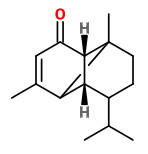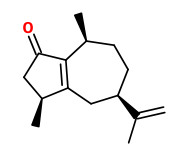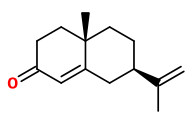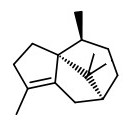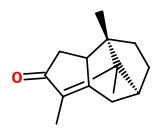Cyperus rotundus L. - Cyperaceae - (purple) nut grass, (purple) nut sedge, coco gras, coco sedge, Knolliges Zypergras
„Cyperus rotundus is one of the most invasive weeds known, having spread out to a worldwide distribution in tropical and temperate regions. It has been called 'the world's worst weed'… A sesquiterpene, rotundone, so called because it was originally extracted from the tuber of this plant, is responsible for the spicy aroma of black pepper and the peppery taste of certain Australian Shiraz wines.“ https://en.wikipedia.org/wiki/Cyperus_rotundus
Mustakone is a very important odor component of Cyperus spec. essential oils especially from Cyperus articulatus var. articulatus (9.8-14.5%), C. articulatus var nodosus (6.6-14.5%), and C. rotundus.
[Comparison of the Main Components of the Essential Oils of “priprioca”: Cyperus articulatus var. articulatus L., C. articulatus var. nodosus L., C. prolixus Kunth and C. rotundus L., Zoghbi, M.D.G., Andrade, E.H., Carreira, L.M., Rocha, E.A., Journal of Essential Oil Research, 20(1), 2008, 42-45]
Rotundone concentration in C.rotundus (920µg/kg) found nearly as high as in black pepper (1200µg/kg).
[Spice up your life-The Rotundone story., Wood, C., Siebert, T.E., Parker, M., Capone, D.L., Elsey, G.M., Pollnitz, A.P., Krammer, G., Expression of Multideisciplinary flavour science, Proceedings of the 12th Weurman Symposium., 2008]
„The chemical composition of the volatile oils of C.rotundus has been extensively studied and four chemotypes (H-, K-, M- O-types), of the essential oils from different parts of Asia have been reported:
The H-type from Japan was found to contain α-cyperone (36.6%), ß-selinene (18.5%), cyperol (7.4%) and caryophyllene (6.2%).
The M-type from China, Hong Kong, Japan, Taiwan and Vietnam had α-cyperone (30.7%), cyperotundone (19.4%), ß-selinene (17.8%), cyperene (7.2%) and cyperol (5.6%).
The O-type from Japan, Taiwan, Thailand, Hawaii and the Philippines was characterized by cyperene (30.8%), cyperotundone (13.1%) and ß-elemene (5.2%). In addition, the Hawaiian O-type had cyperotundone (25.0%) and cyperene (20.7%) as the major compounds.
Finally, the K-type, also from Hawaii, was dominated by cyperene (28.7%), cyperotundone (8.8%),
patchoulenyl acetate (8.0%) and sugeonyl acetate (6.9%).“
[Medicinal uses and pharmacological activities of Cyperus rotundus Linn-A Review., Sivapalan, S.R., Int J Sci Res Pub, 3(5), 2013, 1-7]
„The n-hexane fraction of an ethanol extract of C. rotundus rhizomes was found to inhibit cell growth in ovarian cancer (A2780, SKOV3 and OVCAR3) and endometrial cancer (Hec1A and Ishikawa) cells. Among the thirteen sesquiterpenes isolated from the n-hexane fraction, some patchoulane-type compounds, but not eudesmane-type compounds, showed moderate cytotoxic activity in human ovarian cancer cells… 6-acetoxy cyperene, a patchoulane-type sesquiterpene isolated from C. rotundus rhizomes, is an anti-tumour compound that causes caspase-dependent apoptosis in ovarian cancer cells“
[6‐Acetoxy Cyperene, a Patchoulane‐type Sesquiterpene Isolated from Cyperus rotundus Rhizomes Induces Caspase‐dependent Apoptosis in Human Ovarian Cancer Cells., Ahn, J.H., Lee, T.W., Kim, K.H., Byun, H., Ryu, B., Lee, K.T., Choi, J.H., Phytotherapy Research, 29(9), 2015, 1330-1338]
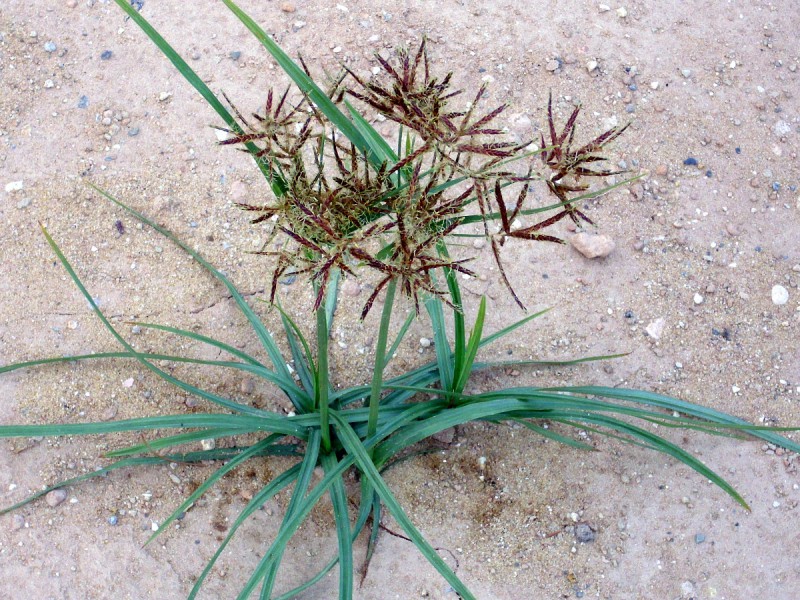
Cyperus rotundus habit, La Mata, Torrevieja, Alicante, Spain, author: Javier martin, (PD, CC0)
https://commons.wikimedia.org/wiki/File:Cyperus_rotundus_Habitus_2010-7-11_LagunadelaMata.jpg

